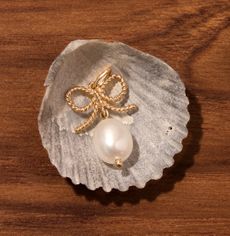After multiple seasons of avidly watching Dancing with the Stars and America's Best Dance Crew — and some botched samba steps in front of my bathroom mirror — I was ready for professional help. I wanted to tango like Tia Carrere in True Lies. I wanted Sarah Jessica Parker's strong yet slim School of American Ballet body. I wanted — no, needed — dance classes. But first I had to muster up the courage to enroll.
My initial attempt was years ago, when my friend Aimee and I decided it would be fun to take jazz lessons to tone up for her wedding. But we didn't even make it to the registration office. Walking into the Peridance Center in New York City's East Village was like entering a casting call for a Flashdance remake. Wearing slashed sweatshirts and woolly leg warmers, the students splayed in the musty hallways, holding their legs up by their ears. Never mind standing splits, my clumsy legs can't even stretch open to a 90-degree angle! Aimee and I looked at each other, mouthed "No way," and ran out of there.
Thinking that I'd fit in better at one of Crunch's 60 dance-inspired classes, I signed up for the gym's Ballet Body, only to discover a crowd as scary as the one at Peridance — just with looser chignons and flashier leotards. Like the pros, they bounded up to the front of the class for their rotating solos. How does a beginner — who hasn't strapped on her dancing shoes since grade school — keep up?
"Nobody really cares what you're doing in class," Jin Lee, director of operations at the Millennium Dance Complex in Los Angeles (home to MTV's Dancelife reality show), assures me. And the reason that the students in the beginner section are so good is because they're not really amateurs. "Pros take basics classes to refine their technique. But dancers are vain and so focused on themselves, they're not looking at you," explains Lee. "They have tunnel vision. They don't want to be distracted and mess up, so they just stare at themselves in the mirror."
Confidence restored, I resolve to try again. I decide immediately that choreography-focused classes aren't for me. Anything with a "five, six, seven, eight" count and solos makes me panic. Tunnel vision or not, no one can ignore me when I collide into her during my ill-spotted turns. Fortunately, New York City's Joffrey Ballet School has a true basics class that spends most of the time at the barre, where I can discreetly blend in with the other beginners.
Prepping for my official entrance into the ballet world, I'm tempted by all the accoutrements, from leotards to leg warmers. And then there's all the trendy dance fashion, like Marc Jacobs' Martha Graham-inspired spring collection. Drop-in classes may cost only $15 a pop, but all the chiffon skirts could seriously add up.
"I didn't know what to wear the first time, so I went to American Apparel and bought their dance collection with the thong bodysuit. I looked ridiculous," admits Rescue Beauty Lounge owner and adult ballet devotee Ji Baek, who suggests I stick with Capezio.
Stay In The Know
Marie Claire email subscribers get intel on fashion and beauty trends, hot-off-the-press celebrity news, and more. Sign up here.
At my first class, I immediately spot the young Madonna look-alike who could challenge Cirque du Soleil contortionists in flexibility. But, as Lee promised, she spends the hour admiring herself in the mirror. Instead of obsessing over the other students, I quickly learn I have a bigger problem. Apparently, I stand completely wrong. I usually lean my rib cage back and lead with my hips, but for ballet, I must stick out my chest and roll my shoulders backward. Sucking in the stomach is just a side effect of holding this new posture in place. No wonder dancers have washboard abs.
After 45 minutes of pliés and port de bras at the barre — and a mercifully brief five minutes of floor-sweeping jumps — the last part of class is my favorite: floor stretches. I can't remember the last time I did classic calisthenics, and just sitting for a couple of minutes — attempting to keep my back and legs straight — makes my thighs shake. My glutes are already sore, my hamstrings are stretched to the limit, and now my lower back wants to collapse. Who knew the basics would be such hard work?
"Perfection in ballet is like Waiting for Godot: You'll never achieve it. Even professional ballerinas constantly have to practice," says Baek, who opts for private sessions because she doesn't want to deal with group class drama. "I used to get so frustrated, but then my husband said, 'Don't forget, you're doing this for fun.'" The payoff for the tough discipline? "Dancers have flat stomachs, insane arms, and a little bubble butt. Because of ballet, I finally have an ass," she brags. After two-and-a-half years of lessons, Baek admits she still gets nervous in front of other dancers. "When I went to get my pointe shoes fitted, it was the fanciest experience, but there were all these crazy bunheads there, and I could barely stand up. Ballet is really intimidating, but it shouldn't be an ego competition. You can't give up."
A few more classes, and my shoulders aren't a problem. (Now it's my stomach, which I can't suck in far enough.) And my new stance has improved my poise overall. I start checking my posture when I walk by reflective surfaces. But when I go in for my usual Pilates workout, my back is more sore than usual. "Your body is so tight, the last thing you should be doing is ballet, with all the stiff positions," explains my instructor Judy, who taught dance at Joffrey before joining Power Pilates. "What you need to take is jazz. That'll loosen you up." As I look at her willowy physique, I understand why dancers often dabble in multiple genres at the same time. Time to go shopping for jazz shoes.
-
 Cute Summer Outfits From the Runways With Real-Life Appeal
Cute Summer Outfits From the Runways With Real-Life AppealFrom beach bumming to al fresco dining.
By Emma Childs Published
-
 J.Crew x Catbird Will Take Over Your Summer Jewelry Stack
J.Crew x Catbird Will Take Over Your Summer Jewelry StackThe new collab is the prettiest addition to your wardrobe.
By Julia Marzovilla Published
-
 Anne Hathaway Provides a Much-Awaited Update on Sequels for Two of Her Most Popular Movies
Anne Hathaway Provides a Much-Awaited Update on Sequels for Two of Her Most Popular MoviesThere's some good news, and there's some bad news.
By Fleurine Tideman Published
-
 Senator Klobuchar: "Early Detection Saves Lives. It Saved Mine"
Senator Klobuchar: "Early Detection Saves Lives. It Saved Mine"Senator and breast cancer survivor Amy Klobuchar is encouraging women not to put off preventative care any longer.
By Senator Amy Klobuchar Published
-
 How Being a Plus-Size Nude Model Made Me Finally Love My Body
How Being a Plus-Size Nude Model Made Me Finally Love My BodyI'm plus size, but after I decided to pose nude for photos, I suddenly felt more body positive.
By Kelly Burch Published
-
 I'm an Egg Donor. Why Was It So Difficult for Me to Tell People That?
I'm an Egg Donor. Why Was It So Difficult for Me to Tell People That?Much like abortion, surrogacy, and IVF, becoming an egg donor was a reproductive choice that felt unfit for society’s standards of womanhood.
By Lauryn Chamberlain Published
-
 The 20 Best Probiotics to Keep Your Gut in Check
The 20 Best Probiotics to Keep Your Gut in CheckGut health = wealth.
By Julia Marzovilla Published
-
 Simone Biles Is Out of the Team Final at the Tokyo Olympics
Simone Biles Is Out of the Team Final at the Tokyo OlympicsShe withdrew from the event due to a medical issue, according to USA Gymnastics.
By Rachel Epstein Published
-
 The Truth About Thigh Gaps
The Truth About Thigh GapsWe're going to need you to stop right there.
By Kenny Thapoung Published
-
 3 Women On What It’s Like Living With An “Invisible” Condition
3 Women On What It’s Like Living With An “Invisible” ConditionDespite having no outward signs, they can be brutal on the body and the mind. Here’s how each woman deals with having illnesses others often don’t understand.
By Emily Shiffer Published
-
 The High Price of Living With Chronic Pain
The High Price of Living With Chronic PainThree women open up about how their conditions impact their bodies—and their wallets.
By Alice Oglethorpe Published